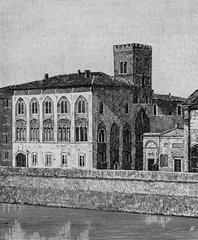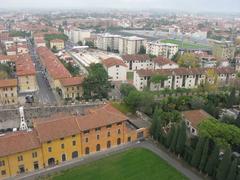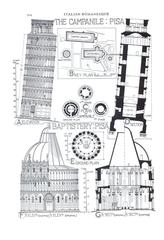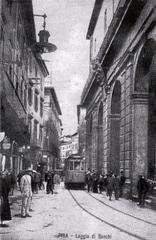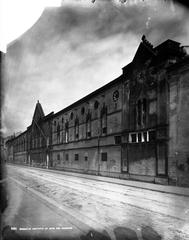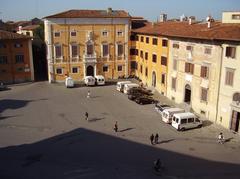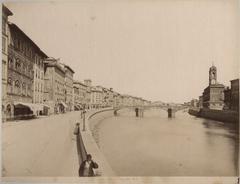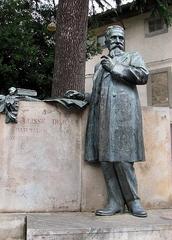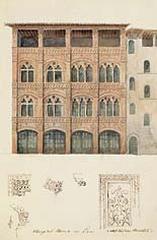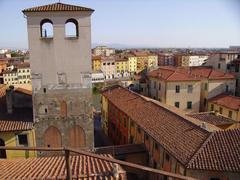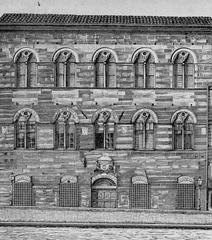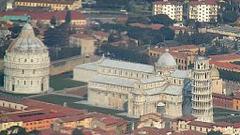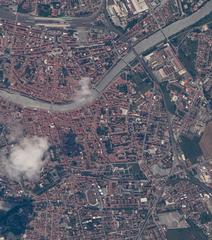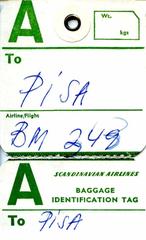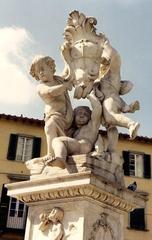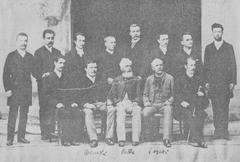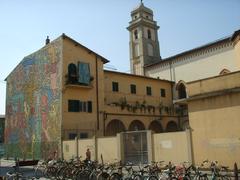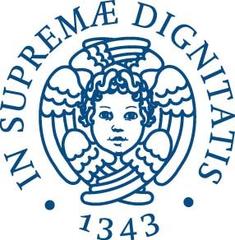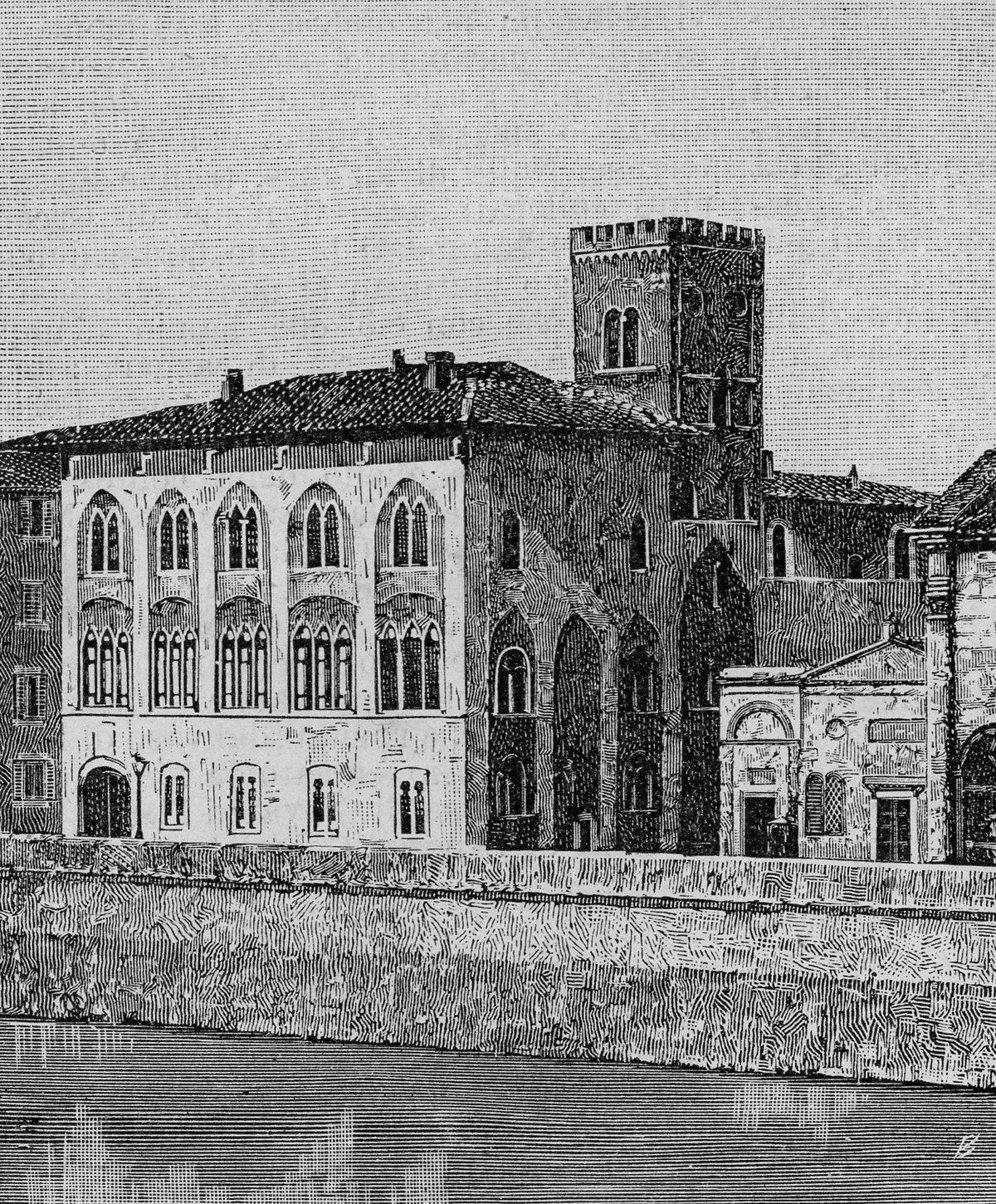
Palazzo Vecchio De’ Medici Pisa: Visiting Hours, Tickets, and Historical Site Guide
Date: 15/06/2025
Introduction
Nestled along the Lungarno Mediceo, the Palazzo Vecchio De’ Medici stands as a testament to Pisa’s rich medieval and Renaissance history. Once the fortified residence of noble families and later the seat of Medici power in the city, the palace is now home to the Prefecture of Pisa and a compelling destination for anyone interested in architecture, art, or Tuscan history. This guide provides a comprehensive overview of its fascinating past, architectural highlights, visiting information—including hours, tickets, and accessibility—and tips for making the most of your visit. For further details, consult reputable sources such as the official Prefecture of Pisa website and curated travel guides (Wikipedia, ItalyScapes, Nomads Travel Guide).
Table of Contents
- Historical Overview
- Architectural Features
- Visiting Information
- Nearby Attractions
- FAQ
- Conclusion
- References
Historical Overview
Medieval Beginnings
The origins of Palazzo Vecchio De’ Medici trace back to the 11th century, when the Albizone family constructed a fortified tower house on this site (Wikipedia). Over the centuries, it evolved into a prominent palace, reflecting the city’s growth and changing urban fabric (ItalyScapes).
Appiani and Medici Influence
In the late 14th century, the Appiani family, who briefly ruled Pisa, made the palace their residence. The Medici family acquired the palace in 1446, establishing it as a symbol of their expanding influence across Tuscany. Notably, Lorenzo de’ Medici hosted scholars and dignitaries here, solidifying the palace’s place in the city’s intellectual and political life (Nomads Travel Guide, ItalyScapes).
Renaissance and Later Transformations
The palace played host to significant events, including the stay of King Charles VIII of France in 1494. Cosimo I de’ Medici resided here in 1539, and by the late 16th century, the Medici family shifted their residence to Palazzo Reale. The Vecchio palace changed hands and functions several times before leaving Medici ownership in 1784 (Wikipedia).
19th-Century Restoration
In 1871, Marchesa Vittoria Spinola undertook a major restoration led by architect Ranieri Simonelli, giving the palace its distinctive Gothic Revival appearance with mullioned windows and a crenellated tower (Wikipedia IT). Today, the palace remains an architectural and historical landmark, serving as the Prefecture of Pisa.
Architectural Features
Exterior and Structure
The palace’s exterior combines medieval fortification elements with 19th-century romanticism. The ground floor is clad in local Verrucano stone and features bifore windows, while the upper stories present elegant triple-arched and double-arched windows. The 19th-century crenellated brick tower adds to its fortress-like silhouette (Wikipedia IT).
Interior Highlights
While the palace does not house extensive art collections like its Florentine counterpart, its interiors showcase coffered ceilings, decorative fireplaces, and traces of Renaissance artistry. The arrangement of private apartments around a central courtyard recalls the classic layout of Tuscan noble residences (Pisa Tours).
Artistic Legacy
The palace’s layered history is echoed in its architecture and modest artistic decoration. Frescoes, tapestries, and sculptural elements added during various periods reflect the Medici’s patronage and the evolving tastes of its owners (Nomads Travel Guide).
Visiting Information
Hours and Admission
- General Opening: Typically Tuesday to Sunday, 9:00 AM – 6:00 PM. Closed Mondays and public holidays.
- Administrative Function: As the seat of the Prefecture, regular public access may be limited to special events or guided tours. Always check the official Prefecture of Pisa website or local tourism information for up-to-date hours and visitor arrangements.
- Tickets: General admission is usually €8, with reductions for EU citizens (18–25 years, €5) and free entry for children under 18. Guided tours may incur additional charges. Tickets can be purchased online or at the entrance, subject to availability.
Accessibility
The palace is partially accessible to visitors with mobility challenges. Some areas retain original structural features that limit elevator access. It is recommended to contact the Prefecture in advance for specific accessibility arrangements.
Guided Tours and Events
Guided tours are occasionally available, especially during cultural festivals or by appointment. These tours provide valuable insight into the palace’s architecture, art, and the Medici family’s influence. The palace also hosts cultural events and temporary exhibitions—consult the event calendar for current offerings.
Photography Tips
The palace’s facade along the Lungarno Mediceo is particularly photogenic, especially at golden hour. While exterior photography is encouraged, interior photography may be restricted during tours—please check on-site policies.
Nearby Attractions
- Pisa Cathedral (Duomo di Pisa): A masterpiece of Romanesque architecture, about 10 minutes on foot.
- Leaning Tower of Pisa: Pisa’s iconic symbol, a 15-minute walk from the palace.
- Piazza dei Cavalieri: A historic square with striking Renaissance buildings.
- Museo Nazionale di San Matteo: A nearby museum showcasing Tuscan art.
Combine your visit to the Palazzo Vecchio De’ Medici with these sites for a well-rounded exploration of Pisa’s historical landscape.
Frequently Asked Questions (FAQ)
Q: How do I buy tickets for Palazzo Vecchio De’ Medici?
A: Tickets can be purchased online via the Prefecture’s website or at the entrance. Advance booking is recommended, especially during peak seasons.
Q: What are the best times to visit?
A: Early mornings on weekdays are less crowded. Late afternoons provide excellent photography light.
Q: Is the palace wheelchair accessible?
A: There is partial accessibility; some historic areas may be difficult to access. Contact the Prefecture for assistance.
Q: Are guided tours available?
A: Yes, but they are offered on select days or by appointment; check availability in advance.
Q: Can I take photographs inside?
A: Exterior photography is permitted; interior photography may be restricted during certain tours or events.
Conclusion
The Palazzo Vecchio De’ Medici is a powerful testament to Pisa’s layered history, blending medieval fortifications, Renaissance elegance, and 19th-century romantic revival. Whether you’re passionate about history, architecture, or art, the palace offers a unique insight into Tuscany’s past beyond Pisa’s more familiar landmarks. For the most rewarding visit, check current hours and ticketing options, consider a guided tour, and plan to explore the surrounding historic district. Download the Audiala app for guided tours and travel tips, and follow us on social media for the latest news on Pisa’s cultural treasures.
Suggested Visuals
- High-resolution images of the palace’s crenellated tower and facade (alt text: “Palazzo Vecchio De’ Medici Pisa exterior with crenellated tower”).
- Photos of interior architectural highlights, such as coffered ceilings and stonework (alt text: “Gothic Revival windows inside Palazzo Vecchio De’ Medici”).
- Maps indicating the palace’s location and nearby attractions.
- Virtual tour links if available from official sources.
References and Further Reading
- Palazzo Vecchio De’ Medici Pisa: History, Visiting Hours, Tickets & Travel Guide, ItalyScapes
- Visiting Palazzo Vecchio De’ Medici in Pisa: Hours, Tickets, and Architectural Highlights, Pisa Tours
- Visiting Palazzo Vecchio De’ Medici in Pisa: History, Tickets, and Travel Tips, Pisa Tour
- Palazzo Vecchio De’ Medici in Pisa: Visiting Hours, Tickets & Historical Guide, Florence Tips
- Palazzo Vecchio De’ Medici Pisa Wikipedia
- Palazzo Medici (Pisa) Wikipedia IT
- Nomads Travel Guide on Palazzo Vecchio De’ Medici
